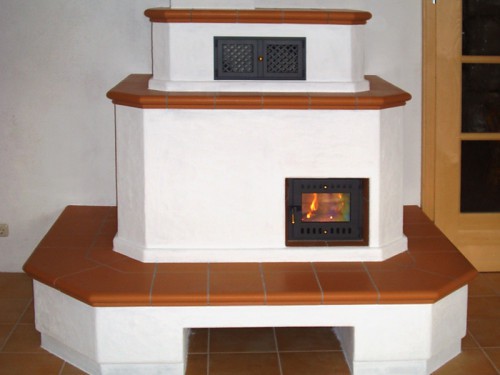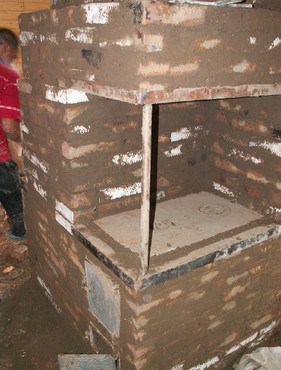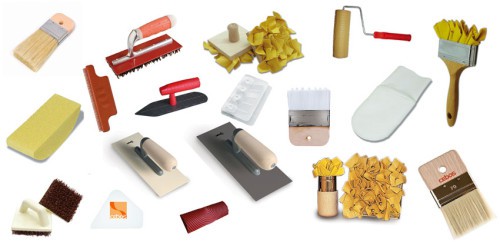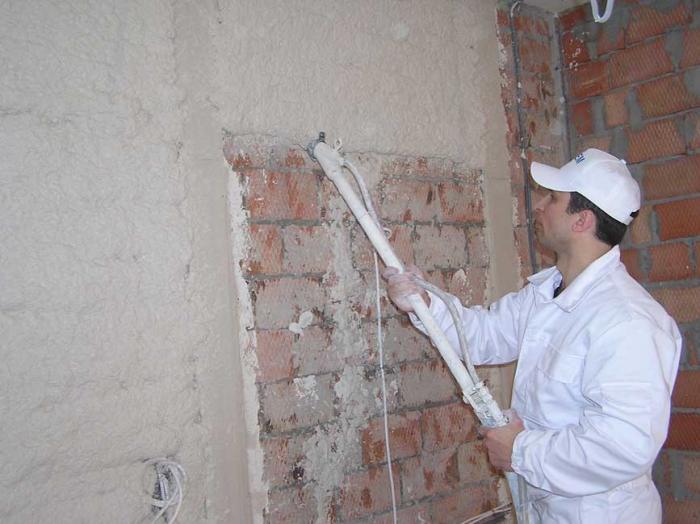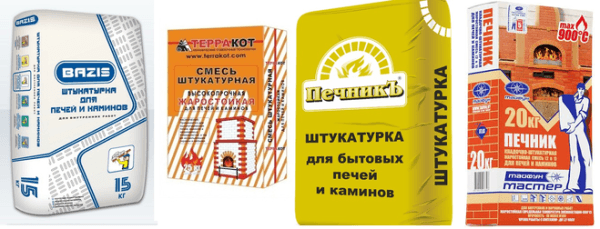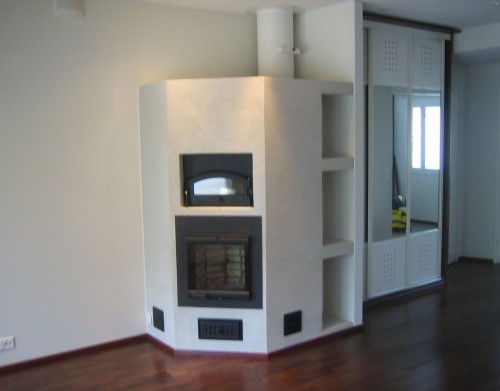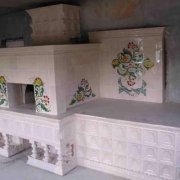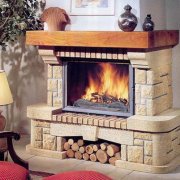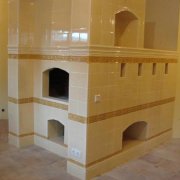How and what to plaster the stove
How to plaster the stove? Recently, in summer cottages in their homes, the owners of the stove want to give it an old look: plaster it with clay mortar and whitewash it with chalk and lime. Such natural compounds smell fresh, have an antibacterial effect after whitewashing. How to plaster the stove in the country and in your house will tell the article.
The content of the article
Why plaster ovens
An oven without facing looks not aesthetically pleasing.
Wherein:
- Dust and debris can collect in the seams between the bricks.
- She does not wash well.
- Unpleasant odors spread when the stove is heated.
- With poor-quality masonry, part of the smoke and carbon dioxide harmful to human health comes out through microcracks in the seams.
Tip: To avoid such troubles, you should plaster the stoves, lining them with tiles, apply a thin layer of concrete or perform other types of finishes for structures that require some cost. The price of a stucco stove is one of the lowest.
Before deciding how to plaster the oven, you need to determine its finish.
It could be:
- Originally beautifully and evenly laid out brick.
- Use when laying the construction of facing bricks.
Both of these methods, with high-quality work with jointing between the bricks, make the stove look great without additional plastering, especially if the structure is then coated with a special varnish made on a water basis, giving the effect of wet stone. In this case, possible peeling off of the plaster, which occurs over time due to errors when plastering the stove with your own hands, can be avoided.
Often in the house there is already a finished stove made of old, not too smooth brick. It’s necessary to resolve the issue how to plaster a brick oven with your own handsto do it efficiently. Before plastering the stove, it is necessary to find out the reasons why the coating can peel off.
They can be:
- Incorrect seam thickness.
- Deviations in the dressing of the rows of bricks.
- Frequent overheating of the furnace.
To prevent these problems, a mesh reinforcing from thin steel is laid before plastering the furnace (see Plaster grid steel - types and application), the size of its cells is not more than one centimeter. The mesh to the brickwork of the device is fixed with a wire with a diameter of three millimeters. The wire should be laid on each row of masonry during the construction of the stove.
Replace the reinforced mesh by covering the furnace with burlap, previously soaked in clay diluted to a rare state, and apply a small layer of clay composition to the walls of the structure. The burlap unfolds and neatly straightens on the furnace without the formation of air gaps. The furnace should not subsequently overheat.
How to prepare a solution
Everyone chooses how and how to plaster the stove.
It can be such solutions as:
- Simple clay composition (cm. Clay mortar for stucco: proportions).
- Lime and gypsum.
- A mixture of cement, clay and sand.
- Lime and clay sand.
Such compositions are available in dry form, go on sale in bags or prepared with their own hands. Often, clay mortar is used to plaster the stove.
Tip: Before plastering the stove, it is necessary that the brickwork is completely cured and shrinkage of the structure is excluded, after about 30 days.With a properly prepared solution and high-quality application of plaster on the stove, the coating will last a long time.
The solution on the stove should be applied to the surface easily, smoothing it well. The amount of sand that mixes into the solution affects the degree of clay fat.
With a high clay content, the proportions of the mixtures used for plaster are 1/3, or 1/4. You can add strength to the solution by introducing a little up to 0.2 fraction of fine glass fiber or asbestos fiber into it.
Features of plastering the furnace
Before plastering the stove:
- Its surface should be cleaned of dust, masonry mortar on the surface and other contaminants, which will improve the adhesion of the coating and brickwork.
- It is necessary to clean joints between bricks to a depth of about 5 millimeters.
- Before applying the solution, the stove should be heated.
- The solution must be applied only to warm walls.
To find out what is better to plaster the stove, it is proposed to familiarize yourself with the table, which shows the proportions in parts of the most popular stucco compositions:
| Material | The proportions in the compositions | ||||
| first | second | third | fourth | fifth | |
| Clay | 1 | 1 | 1 | ||
| Sand | 2 | 1 | 2 | 2 | 1 |
| Asbestos | 0,1 | 0,2 | 0,1 | 0,1 | |
| Gypsum | 1 | 1 | |||
| Lime | 2 | 1 | 2 | ||
| Cement | 1 | ||||
| Fiberglass | 0,2 | ||||
Tip: It should be borne in mind that the stove is a special design, when plastering it everything needs to be done correctly so that it is not necessary to collect pieces of freshly laid plaster that has flown off in pieces.
There are several recommendations that will help to properly apply the coating on the furnace:
- Preference should be given to the solution using clay or lime, but asbestos is always added.
- Suitable mortars made on a cement basis, but also with the addition of asbestos, are suitable.
Tip: You can replace asbestos with straw or hemp.
- It is not necessary to plaster only the built furnace, the masonry should harden well.
- The solution should be laid on a coarse mesh network made of metal, which additionally strengthens the plaster layer from constant temperature jumps.
- After coating, the material is selected, than to paint the plastered stove. Do not use oil paints. Drying oil, which is part of them, burns after heating, and emits unpleasant odors.
What tools are needed for plastering the stove
After choosing the appropriate composition of the plaster, all the necessary tools are prepared.
These include:
- Capacity for the preparation of plaster.
- Drill with a nozzle.
- Trowel.
- Emery paper with varying degrees of grain.
- Grater.
- Brush.
- Bucket for water.
- Building level.
- A fine mesh made of fiberglass or burlap.
- Nails
- Primer of the desired composition.
How to apply plaster on the stove
Coating Instructions:
- The plastering of the furnace starts from its upper part, as shown in the photo.
- The brickwork of the stove is wetted with water.
- A trowel or a grater is applied to the liquid layer of the solution.
- A thicker composition is laid.
Tip: Do not apply layers more than 5 millimeters thick. For uniform drying of the plaster, it must be applied with a fairly even layer.
- After setting the plaster, but still quite soft, it should be rubbed with a circular motion of a wood grater until a smooth and even plane is formed. If the plaster on the stove is poorly smoothed - this indicates that the material had time to set. In this case, the surface must be sprayed with water and grouting continued with a wooden brush. The thickness of the coating layer should not be more than one centimeter.
- The corners of the structure are plastered similarly to door and window openings, which can be seen in the video in this article.
- After hardening the composition for the plaster, the stove should be covered with milk of lime, with the addition of salt, per bucket of about 100 grams.You can use lime dough, which is removed during grouting with milk.
After the plastering of the furnace, the following result should be obtained:
- The deviation from the vertical surface of the furnace to the entire height should be no more than 10 millimeters.
- From horizontal - up to two millimeters.
- No more than three millimeters should be the deviation of the thrust from the vertical line.
How to plaster a chimney
Before plastering the chimney, it is necessary to purchase special heat-resistant mixtures. They must be environmentally friendly to prevent the release of harmful substances into the air during heating and cooling.
When preparing plaster dry mixes, it is necessary to strictly follow the instructions for their use, without violating the proportions, which can reduce the properties of the prepared solution and lead to the formation of cracks on the surface.
To finish the rough plaster mixture, you can cook yourself.
For this:
- One piece of clay is taken.
- Two pieces of sand are added.
- One cement.
- 0.1 part of asbestos.
Clay is soaked for several hours, sand is sifted.
Before coating, the surface of the rough is reinforced with burlap that is as tight as possible to the wall or mesh of metal. In this case, the mesh should be fixed with nails or self-tapping screws, plastic dowels should not be taken.
After covering the stove with a plaster layer, it is better to paint it. To do this, you can use chalk diluted in milk of lime, to obtain the desired color, dyes used for water-based paints are added. There is heat-resistant enamel, paint and varnish. Some of them have a specific smell when the stove is heated, but it disappears with time.
Beautiful and proper coating on the stove will create additional comfort in any home.
